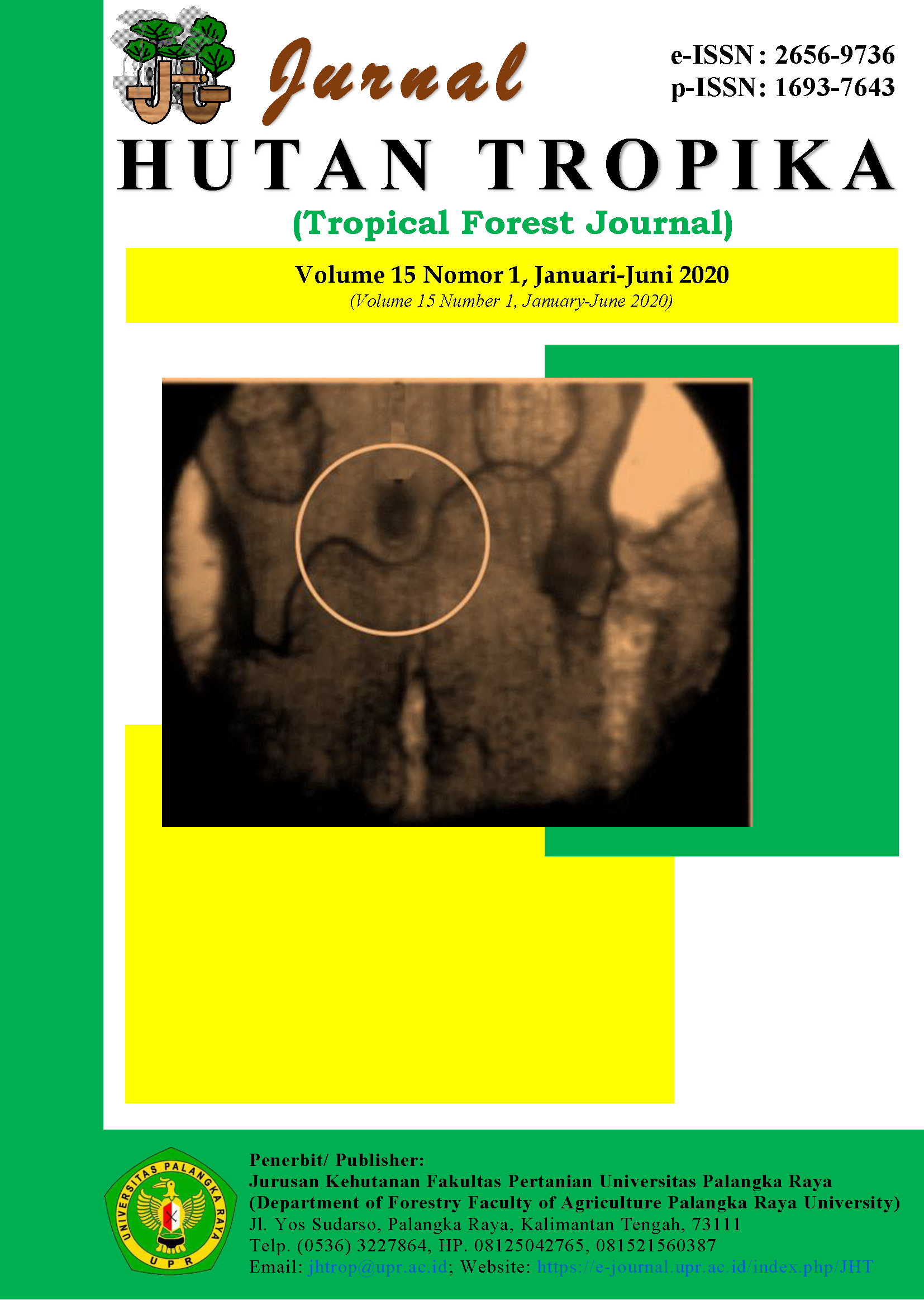DISTRIBUSI DIAMETER TANAMAN SENGON (Paraserianthes falcataria) SEBAGAI INDIKATOR PERTUMBUHAN NORMAL
Sengon Plant Diameter Distribution (Paraserianthes falcataria) as Normal Growth Indicators
DOI:
https://doi.org/10.36873/jht.v15i1.1713Kata Kunci:
Growth, polynomial, sengon, peat swamp landAbstrak
Sengon (Paraserianthes falcataria (L) Nielsen) is one of some exotic plants, so that it is
suitable for planting on mounds of peat-swamp land in support of revegetation and
reforestation, and also to develop plantation forest. This plant have the short rotation,
high economic and ecologically value. The aims of research was to know the diameter
distribution of sengon to detect normal growth as well as they were planted on the
mounds of peat-swamp land and on the traditionaly peat swamp land that flooding
periodically. Data were analized using polynomial equations to form the distribution
graphs. Based on result, at the 4.5 years old of sengon planted on the the mounds of
peat-swamp land and on the traditionaly peat swamp land indicated the normal graph and
abnormal graph respectively. Sengon that planted on the mounds of peat swamp land
formed the polynomial equation Y= -35,4 + 47,043X – 6,7857 X2 with coefficient of
determination (R2
) namely 90.41%, meanwhile Sengon that planted on the traditionaly
peat swamp land formed the polynomial equation Y= -10 + 53,643X – 17,571 X2
+ 1,5
X
3 with coefficient of determination (R2
) namely (R2
) namely 85.99%. Therefore,
sengon that planted on the mounds of peat swamp land growth better than sengon that
planted on the traditionaly of peat swamp land
Keywords: Growth, polynomial, sengon, peat swamp land
Unduhan
Unduhan
Diterbitkan
Terbitan
Bagian
Lisensi
Hak Cipta (c) 2020 Jurnal Hutan Tropika

Artikel ini berlisensi Creative Commons Attribution 4.0 International License.
















